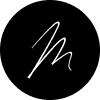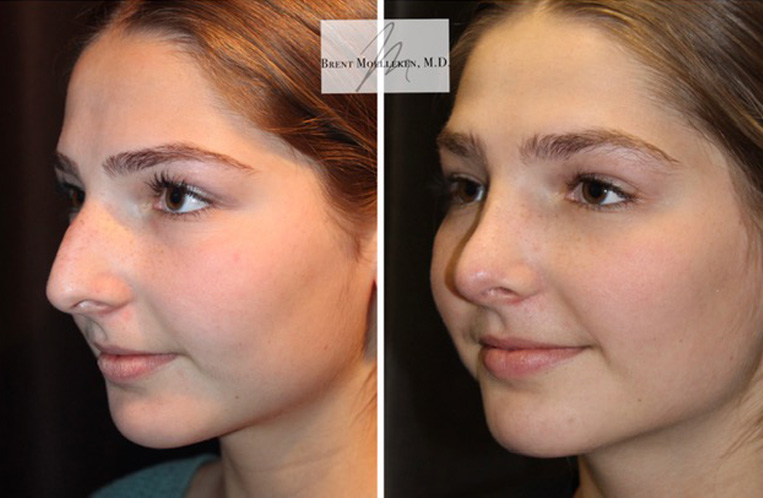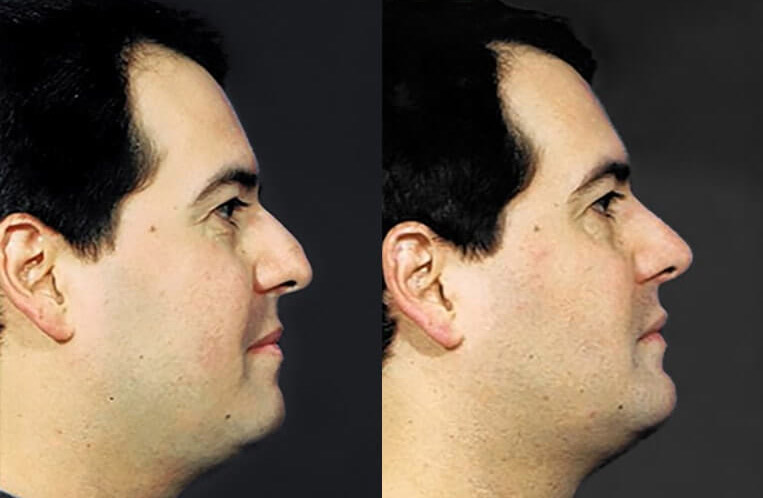Rhinoplasty


Rhinoplasty gives patients the opportunity to bring their entire appearance into a more aligned whole. At his practice in Beverly Hills, double board-certified plastic surgeon Dr. Brent offers tailored procedures that give patients a nose that perfectly suits them.
What Is Rhinoplasty?
Rhinoplasty is the foundational aesthetic nose surgery. Your surgeon uses precise techniques to create specific adjustments to the shape, size, and profile of the nose. The goal with each procedure is to bring a sense of complete balance and harmony to the patient’s facial features, rather than merely make changes to shape or size. Every adjustment to the nose is meticulously planned and executed to sculpt a result that aligns with how you want to look. Common changes in rhinoplasty include:
- Narrowing or widening the nasal tip
- Adjusting the project and position of the nasal tip
- Shaving down nasal bone for a smoother profile
- Improving the contour of the nasal bridge
- Narrowing or widening the nostrils
- Improving nasal symmetry
Rhinoplasty at a Glance
Table of Contents
Procedure Overview
- Preparing for Your Surgery: After building your plan at the consultation, Dr. Brent will give you outlined preparation steps. These are all easy, but are important to having a smooth and safe experience. For example, preparing may include having blood tests, pausing medications, and arranging for a ride home after surgery.
- During the Surgery: Patients receive general anesthesia, ensuring there is no pain during the procedure. The doctor then creates an incision (type depends on your procedure plan), and takes time to gently adjust the nasal structures to create your desired shape. Once finished, he inspects his work attentively before closing any incisions.
- After the Surgery: After you wake up, you can spend some time in a comfortable recovery room. Once you feel ready, someone can drive you home that same day.
Procedure Overview
- Preparing for Your Surgery: After building your plan at the consultation, Dr. Brent will give you outlined preparation steps. These are all easy, but are important to having a smooth and safe experience. For example, preparing may include having blood tests, pausing medications, and arranging for a ride home after surgery.
- During the Surgery: Patients receive general anesthesia, ensuring there is no pain during the procedure. Dr. Brent then creates an incision (type depends on your procedure plan), and takes time to gently adjust the nasal structures to create your desired shape. Once finished, he inspects his work attentively before closing any incisions.
- After the Surgery: After you wake up, you can spend some time in a comfortable recovery room. Once you feel ready, someone can drive you home that same day.
FAQs
Is rhinoplasty right for me?
This is the first question any patient must ask themself about any procedure. If you have any cosmetic or functional concerns about your nose, then this procedure may be the right solution. However, candidates may need to meet a few criteria, such as being in good health, not smoking, and having a healthy outlook.
What age is best for nose surgery?
Rhinoplasty is open to adult patients of all ages, as long as they meet health requirements. Compared to other types of plastic surgery, the results can last a lifetime. So younger patients can have the surgery once and enjoy a refined nasal profile from then on.
What types of rhinoplasty are available?
- Closed Rhinoplasty: Uses hidden incisions within the nostril. The prime advantage is there will be no visible scarring. However, the degree of alterations that can be made with this technique is more limited. Patients who want milder adjustments to their nose will be more suitable for this option.
- Open Rhinoplasty: Uses an incision across the columella, allowing for more extensive reshaping of the nose. The scarring will still be hidden in the nose’s natural folds, but the tradeoff is greater freedom in choosing how your results look.
- Septoplasty: A functional procedure to correct a deviated septum. While the main goal is to improve airflow through the nose, you can also combine the functional aspect with a cosmetic one.
- Revision Rhinoplasty: If you are dissatisfied with the work done by a previous rhinoplasty surgeon, you could select a revision procedure. This type of surgery corrects mistakes or shortcomings of a prior procedure and finally delivers the results you wanted originally.
What is the recovery and downtime like for rhinoplasty?
For an initial period of about 2 weeks, patients will have some swelling and discomfort. However, the swelling should mostly fade after this initial period, and the discomfort is easily managed with medication. For the first 2 or 3 days, we recommend having someone around to help. That way, you can focus entirely on resting.
Still, patients can expect to take 1 to 2 weeks off from work immediately following surgery. Resting and self-care are the top priorities during this downtime. The more you can do to promote smooth healing, the more refined your final results will be. Dr. Brent will provide you with comprehensive instructions on how to care for your nose while recovering from rhinoplasty.
When will I see my results?
The main factor between patients and seeing their results will be the swelling. Though all the structural changes are made by the end of the surgery, it takes time for swelling to resolve. As it does, your nasal structure will settle. Initially, you can see the improvements after about 2 weeks when the majority of the swelling has faded. Keep in mind that residual swelling can take several months to fully resolve, so it may take time for the final results to be visible. However, Dr. Brent factors this into his procedure technique, so the results you see after the swelling has faded will be in line with your tailored plan.
Are the results permanent?
One of the advantages of cosmetic nose surgery is how long the results last. For many patients, the benefits can last a lifetime. Over time, the face’s structure can change due to aging, though. However, the structural changes will last. We do recommend taking good care of your nose. Any injuries can affect how the nose looks. Take especially good care of your nose until it is fully healed. That means staying away from contact sports or activities that have a risk of injury.
Will there be a scar?
With closed rhinoplasty, the incisions are made inside the nose. So while they will heal as scar tissue, they will not be visible at all. Still, Dr. Brent takes exceptional care when making these incisions. He aims to minimize the effect the scar tissue will have on the shape of your nose. This leads to more refined results. Whenever possible, he uses a closed approach so patients can avoid visible scarring.
With open rhinoplasty, incisions are made on the exterior of the nose. However, Dr. Brent makes them in the nose’s natural creases around the nostril. This minimizes any visible scarring. Furthermore, these scars will fade over time with good care. Ultimately, the only thing people should notice is your results, not any scars.
Can I have a second nose procedure?
Most patients will only need a single rhinoplasty for results they enjoy for a lifetime. However, some patients come to us from other surgeons dissatisfied with their results. Usually, this happens if an inexperienced surgeon performed the procedure. In these cases, a patient may need a second (revision) procedure to correct the first surgery’s results. We recommend starting first with a qualified, top-tier surgeon so you can have results you love the first time around. Still, we gladly work with patients to help them get the results they deserve. We want you to love every moment you catch a glimpse of yourself in the mirror.
Is the procedure painful?
Patients will feel no pain during the surgery. Patients will be under general anesthesia the entire time, which means you will be unconscious. After surgery, some discomfort and pain are normal. This will be at its peak for the first few days after surgery. Even during this time, over-the-counter pain relievers usually suffice for managing the discomfort. In cases of more complex surgery, Dr. Brent may prescribe pain medication. After the first few days, the pain should notably lessen. By around 2 weeks, it should no longer require any medication to remain comfortable. You might notice some tenderness, but even this should soon fade.
Is a nose job safe?
Any surgical procedure can carry some amount of potential risk. However, choosing the right surgeon can ensure the safest experience possible. Dr. Brent takes the safety of his patients very seriously. Generally speaking, rhinoplasty is a safe procedure that results in positive outcomes for the vast majority of patients. Additionally, Dr. Brent provides follow-up support to promote a complication-free recovery experience. On the patient’s side, you can enhance your safety with a few key steps:
- Follow all preparation steps before surgery.
- Ask any questions for clarification at any point.
- Follow all post-procedure instructions.
- Keep your nose safe until fully healed.
How do I choose the right surgeon?
Rhinoplasty requires some of the most precise techniques and an eye for beauty. So your surgeon must demonstrate a high capacity for both, and you want to be certain you are working with a physician with the right skill and aesthetic sense. Some ways to ensure you have the right
match include:
- Maximize Your Consultation: The consultation is entirely about you. Ask any questions. Voice any concerns. Take the time to learn about the procedure and also about the surgeon. Do you feel like just another patient or like they are fully focused on your needs?
- Before-and-After Photos: A skilled surgeon will be glad to show you photos of previous procedures. Do the results look like a quality you would want for yourself?
- Check for Certifications: Board certification is a must for a rhinoplasty surgeon. Double board certification is even better!
What can I expect at the consultation?
Dr. Brent works closely with each patient during the consultation. This one-on-one meeting sets the foundation for a successful (and safe) procedure. He conducts a full examination of the nose and your facial structures to ensure this procedure is right for you. From there, he builds a tailored plan based on your discussion. He will also go over your medical history, provide preparation instructions, and answer any questions. We never rush this step. So take as much time as you need to learn about your available options and procedure steps.
Will my nose be broken during surgery?
A common misconception about rhinoplasty involves what happens during the procedure. When people hear about bone involvement, they might assume something dramatic. Firstly, not all rhinoplasty procedures involve working with the bone. Many patients will only require changes to the cartilage. When the bone is involved, it is called osteotomy. It involves a precise cutting of specific parts of the nasal bone. The bone can then be moved inward to further improve the nose’s shape.
How much does rhinoplasty cost?
The cost of a nose job can vary since each procedure is tailored to the patient. Dr. Brent provides each patient with a personalized quote at the end of the consultation. This quote includes a transparent breakdown of each element of the cost, ensuring no surprises after you commit to the procedure. Common elements that influence the cost of rhinoplasty include:
- A surgeon’s skill and experience
- Fees for the board-certified anesthesiologist (enhanced safety)
- Any combination procedures
- Fees for the surgical facility
- Type/complexity of the procedure
Will insurance cover the procedure?
When nose surgery is purely cosmetic, insurance companies generally do not provide coverage. In cases of septoplasty, there is a medically necessary element to the procedure. Insurance providers usually do provide at least partial coverage for such procedures.
During the consultation, Dr. Brent can also work with you to explore options for financing your nose surgery. Flexible payment options are available that can open the door for patients to have the procedures they need to feel at their best.
Book Your Consultation
Dr. Brent has been helping patients unlock their ideal, balanced aesthetic for decades. As a double board-certified surgeon, his expertise is at the forefront of the industry. Each rhinoplasty he performs in Beverly Hills receives the same high standard of attention and focus, providing consistently stunning results. Book your consultation with him today to start building a personalized procedure plan and discover your own facial aesthetic harmony.


